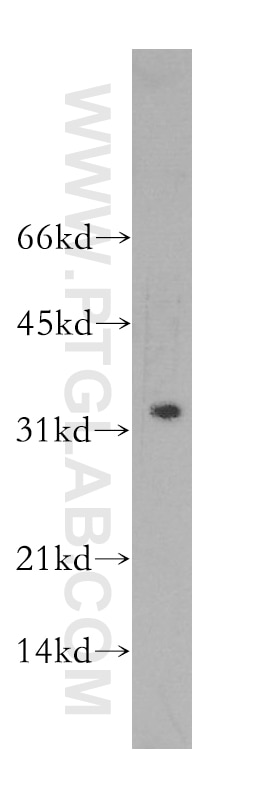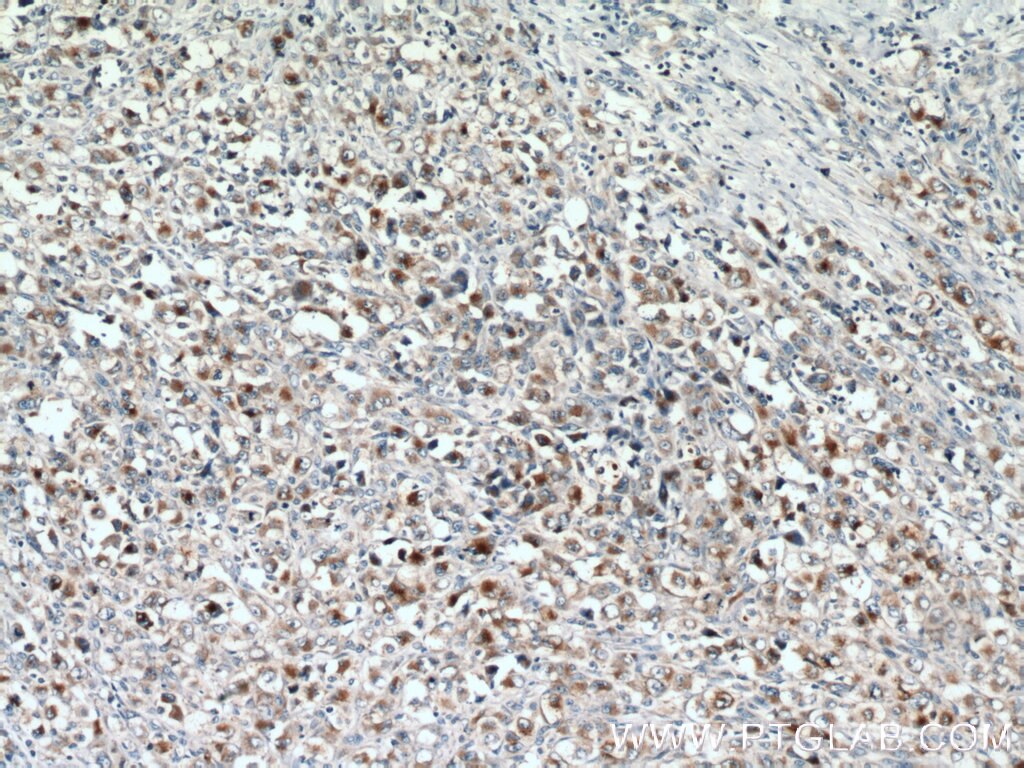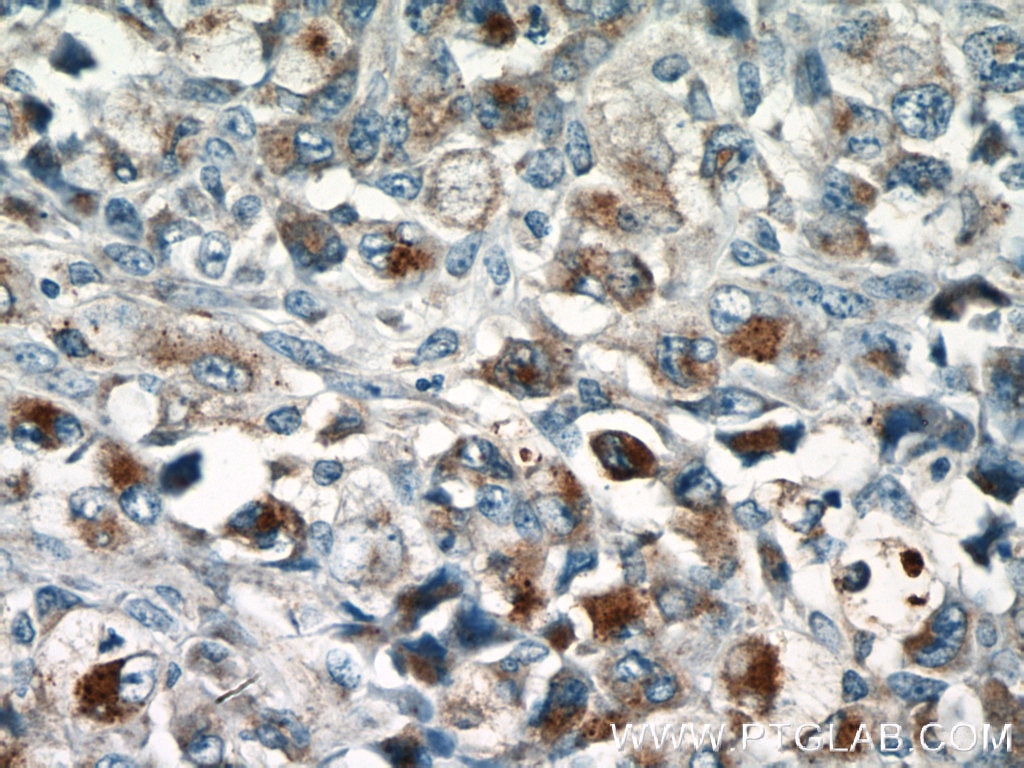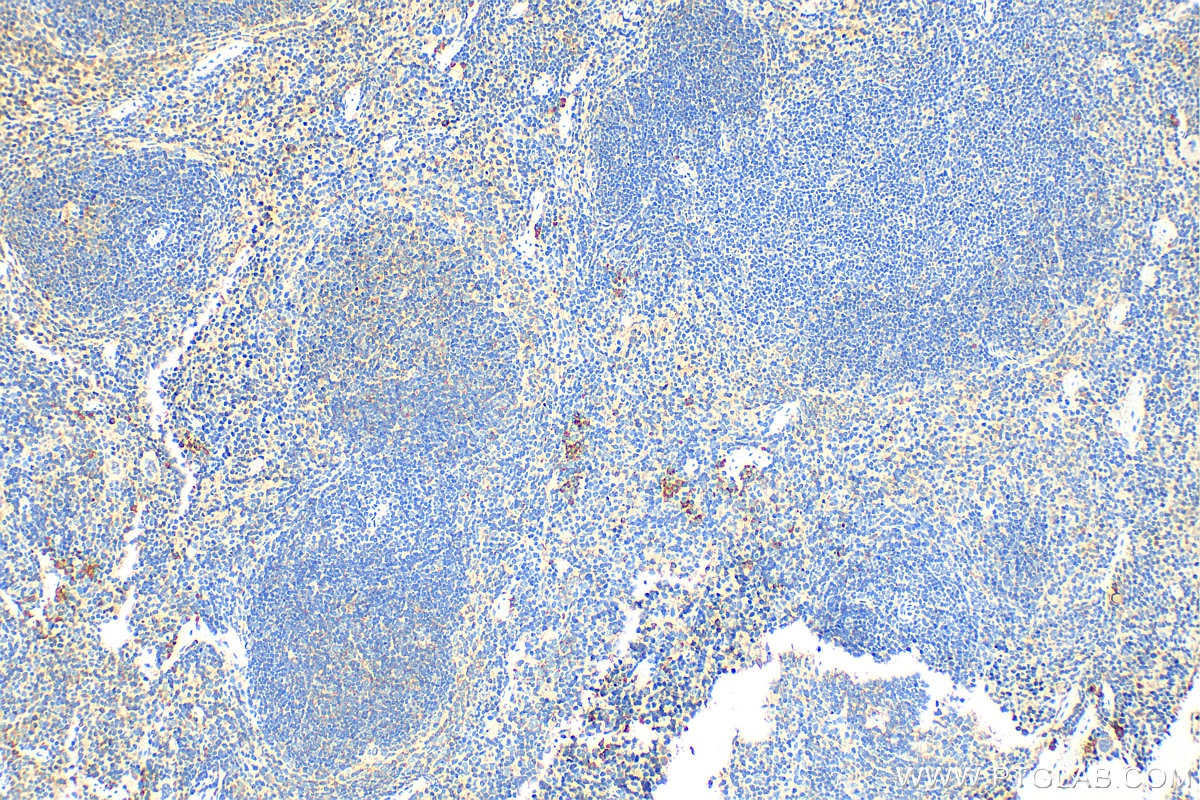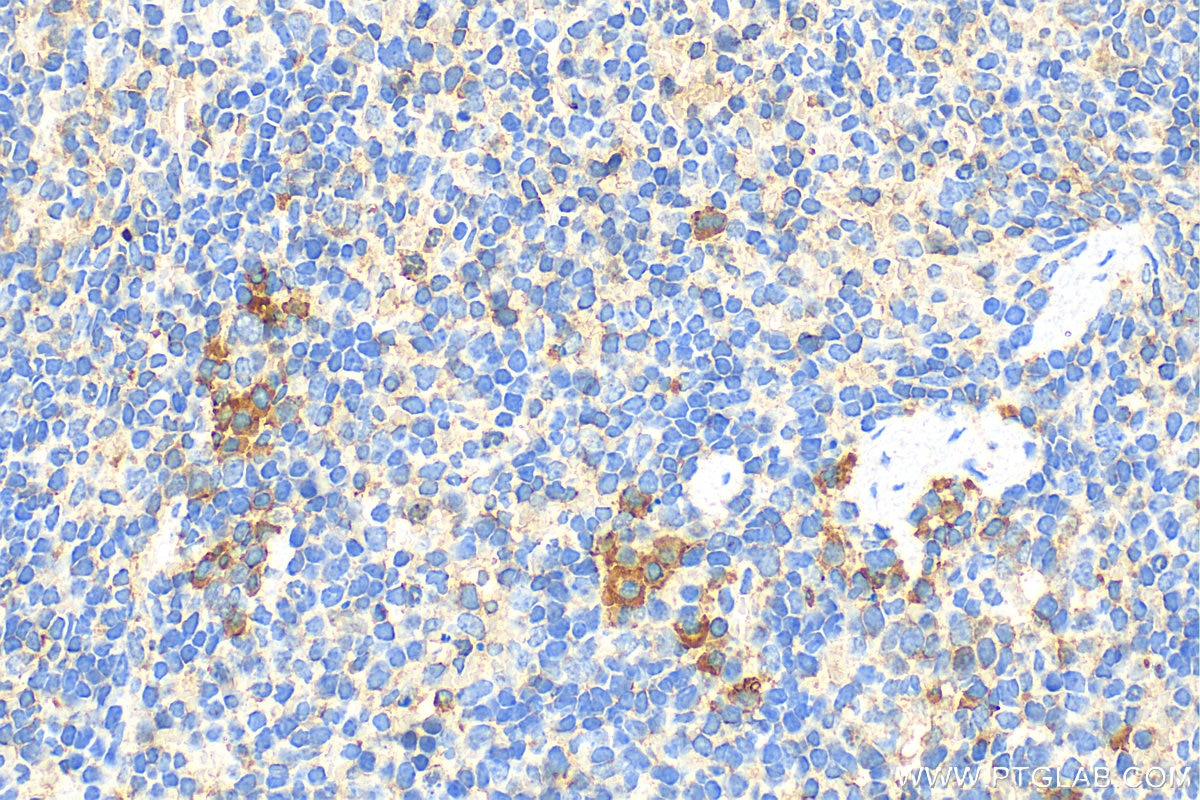Granzyme B Polyklonaler Antikörper
Granzyme B Polyklonal Antikörper für WB, IHC, ELISA
Wirt / Isotyp
Kaninchen / IgG
Getestete Reaktivität
human, Maus und mehr (1)
Anwendung
WB, IHC, IF, ELISA
Konjugation
Unkonjugiert
Kat-Nr. : 13588-1-AP
Synonyme
Geprüfte Anwendungen
| Erfolgreiche Detektion in WB | HL-60-Zellen |
| Erfolgreiche Detektion in IHC | humanes Lymphomgewebe, Mausmilzgewebe Hinweis: Antigendemaskierung mit TE-Puffer pH 9,0 empfohlen. (*) Wahlweise kann die Antigendemaskierung auch mit Citratpuffer pH 6,0 erfolgen. |
Empfohlene Verdünnung
| Anwendung | Verdünnung |
|---|---|
| Western Blot (WB) | WB : 1:500-1:2000 |
| Immunhistochemie (IHC) | IHC : 1:50-1:500 |
| It is recommended that this reagent should be titrated in each testing system to obtain optimal results. | |
| Sample-dependent, check data in validation data gallery | |
Veröffentlichte Anwendungen
| KD/KO | See 1 publications below |
| WB | See 11 publications below |
| IHC | See 28 publications below |
| IF | See 13 publications below |
Produktinformation
13588-1-AP bindet in WB, IHC, IF, ELISA Granzyme B und zeigt Reaktivität mit human, Maus
| Getestete Reaktivität | human, Maus |
| In Publikationen genannte Reaktivität | human, Maus, Ratte |
| Wirt / Isotyp | Kaninchen / IgG |
| Klonalität | Polyklonal |
| Typ | Antikörper |
| Immunogen | Granzyme B fusion protein Ag3883 |
| Vollständiger Name | granzyme B (granzyme 2, cytotoxic T-lymphocyte-associated serine esterase 1) |
| Berechnetes Molekulargewicht | 247 aa, 28 kDa |
| Beobachtetes Molekulargewicht | 33 kDa |
| GenBank-Zugangsnummer | BC030195 |
| Gene symbol | Granzyme B |
| Gene ID (NCBI) | 3002 |
| Konjugation | Unkonjugiert |
| Form | Liquid |
| Reinigungsmethode | Antigen-Affinitätsreinigung |
| Lagerungspuffer | PBS with 0.02% sodium azide and 50% glycerol |
| Lagerungsbedingungen | Bei -20°C lagern. Nach dem Versand ein Jahr lang stabil Aliquotieren ist bei -20oC Lagerung nicht notwendig. 20ul Größen enthalten 0,1% BSA. |
Hintergrundinformationen
GZMB(Granzyme B) is also named as CGL1, CSPB, CTLA1, GRB and belongs to the Granzyme subfamily. This enzyme is necessary for target cell lysis in cell-mediated immune responses. The cytotoxic lymphocyte protease granzyme B (GzmB) can promote apoptosis through direct processing and activation of members of the caspase family. GzmB can also cleave the BH3-only protein, BID, to promote caspase-independent mitochondrial permeabilization (PMID:17283187). GzmB induces laminB degradation in isolated nuclei less efficiently than GzmA (PMID:11331782). This full length protein has 2 glycosylation sites and a signal peptide. Unglycosylated human granzyme B is 26 kDa and high mannose glycosylated is 32 kDa and only 32kDa or smaller forms of granzyme B are accumulated within nuclei (PMID:8626751). GzmB also forms dimers.
Protokolle
| PRODUKTSPEZIFISCHE PROTOKOLLE | |
|---|---|
| WB protocol for Granzyme B antibody 13588-1-AP | Protokoll herunterladen |
| IHC protocol for Granzyme B antibody 13588-1-AP | Protokoll herunterladenl |
| STANDARD-PROTOKOLLE | |
|---|---|
| Klicken Sie hier, um unsere Standardprotokolle anzuzeigen |
Publikationen
| Species | Application | Title |
|---|---|---|
J Am Acad Dermatol Generalized bullous fixed drug eruption is distinct from Stevens-Johnson syndrome/toxic epidermal necrolysis by immunohistopathological features. | ||
Biomaterials In situ subcutaneously injectable thermosensitive PEG-PLGA diblock and PLGA-PEG-PLGA triblock copolymer composite as sustained delivery of bispecific anti-CD3 scFv T-cell/anti-EGFR Fab Engager (BiTEE). | ||
J Nanobiotechnology Oxygen-delivery nanoparticles enhanced immunotherapy efficacy monitored by granzyme B PET imaging in malignant tumors | ||
Oncogene B7-H4 is increased in lung adenocarcinoma harboring EGFR-activating mutations and contributes to immunosuppression. | ||
Clin Transl Med c-Myb facilitates immune escape of esophageal adenocarcinoma cells through the miR-145-5p/SPOP/PD-L1 axis. |
